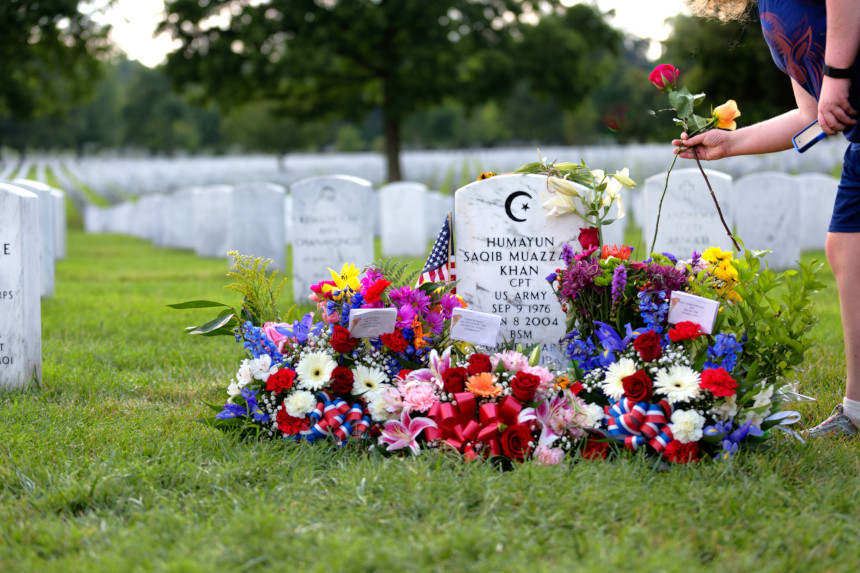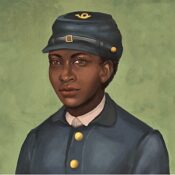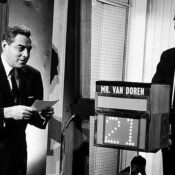This series by American studies professor Ben Railton explores the connections between America’s past and present.
In the last few weeks we’ve seen another of the many destructive side effects to the COVID-19 pandemic: narratives that define the United States as divided into distinct and opposed communities. These narratives have been present for decades, but as the pandemic has devastated numerous American communities, they have been deployed in frustratingly divisive ways: in arguments that New York City should be abandoned for the sake of the U.S. economy; in visions of Southern states as unwilling to practice social distancing for the collective good and so as needing to secede from the nation once more. States and regions have even begun declaring themselves independent entities that would operate outside the nation’s policies.
These current debates are linked to longstanding, complex issues of federalism, states’ rights, and the Constitution, among many other factors. But they are also driven by ongoing visions of these states and regions as distinct not only in politics and ideology, but also in identity: in their cultures, their communities, their demographics. More exactly, the East and West Coasts are often seen as the hubs of American diversity, of the wide range of ethnicities, cultures, nationalities, languages, and religions featured in late 20th and early 21st century America; while middle America is frequently portrayed as more homogeneous in its cultural identity, harkening back to a prior, (mythically) less diverse national identity.
There are various ways to challenge that vision of a divided nation, and to argue instead for a foundational, truly collective American diversity. But for National Arab American Heritage Month, I wanted to do so by highlighting the longstanding, influential Lebanese American community in Cedar Rapids, Iowa, a community whose contributions to American Muslim, civic, and military histories exemplify both the significance of such middle American diversity and the crucial need not to forget such histories.

The first Syrian immigrants (the region was known as Syria at the time but is part of modern-day Lebanon) began arriving in Cedar Rapids around the turn of the 20th century. They were part of a wave of immigration from the region that also included the Syrian immigrants to Ross, North Dakota who in 1929 built the nation’s first known mosque. That mosque was unfortunately demolished in 1979, however, and so it is Cedar Rapids’ Mother Mosque of America (also known as The Rose of Fraternity Lodge, after a Syrian American civic organization that had been meeting in the city since 1925), constructed just a few years later and opened on February 15th, 1934, that remains to this day America’s oldest continually operating mosque.
The Mother Mosque would be enough by itself to make the Cedar Rapids Lebanese American community an influential one, but the community’s civic and national significance extends far beyond that historic building. For much of the 20th century, ethnic and religious discrimination meant that Muslim Americans were not able to bury their family members in many cemeteries, and so in 1948, Cedar Rapids’ Lebanese community leaders (led by the prominent Aossey family) constructed the first Muslim National Cemetery. It would serve as a burial site for Muslim Americans from around the Midwest, offering a shared space for mourning and remembrance for communities too often denied those fundamental human needs.
Just a few years later, some of those same community leaders banded together to create one of the first national Muslim civic organizations. Incorporated in 1952 as the International Muslim Society (IMS), this group began holding annual meetings, conferences that brought together Muslim leaders from across the United States and beyond. The first such meeting was held on June 28th, 1952 in Cedar Rapids; at the third meeting, in 1954, the group renamed itself the Federation of Islamic Associations of Canada and the United States (FIA), making clear its geographic scope and significance. But in each iteration, the organization pursued the same multi-layered goals: helping Muslims with both cultural awareness and adaptation to American and Canadian societies; and providing information about Islam to non-Muslims, including through publications such as the long-running Muslim Star magazine.
One of the IMS/FIA’s organizers was Abdallah (sometimes Abdullah) Ingram, a second-generation member of the Cedar Rapids Lebanese American community who (like many of the group’s founders) had served with distinction in World War II. Yet at the time of Ingram’s service, Islam was not recognized as an official religion by the U.S. military, meaning (among other effects) that Muslim American soldiers who were killed in action or veterans who died later in life had to be buried as “atheists” rather than within the customs of their faith. Ingram fought to change that discriminatory policy and practice, and through an extensive letter-writing campaign to President Dwight D. Eisenhower he succeeded: in 1953 Eisenhower changed the military’s policy and formally recognized Muslim American soldiers.

Ingram described his goals succinctly and powerfully: “I am fighting for my right, and the right of my people, to be recognized as a religious faith.” Thanks to his efforts and those of many others, from the Cedar Rapids community and beyond, Muslim Americans have gradually gained such rights, although 21st century battles over mosques and cultural centers reflect a continued struggle to be sure. But the fight is not just over contemporary and future rights; it is also and just as importantly about better remembering America’s longstanding Muslim communities. And if we can include a community like that of Cedar Rapids’ Lebanese Americans, we might likewise recognize that America’s foundational and enduring diversity has defined every part of our nation, the middle just as much as the coasts.
Featured image: Mother Mosque of America (RifeIdeas via the Creative Commons Attribution-Share Alike 3.0 Unported license / Wikimedia Commons)
Become a Saturday Evening Post member and enjoy unlimited access. Subscribe now



